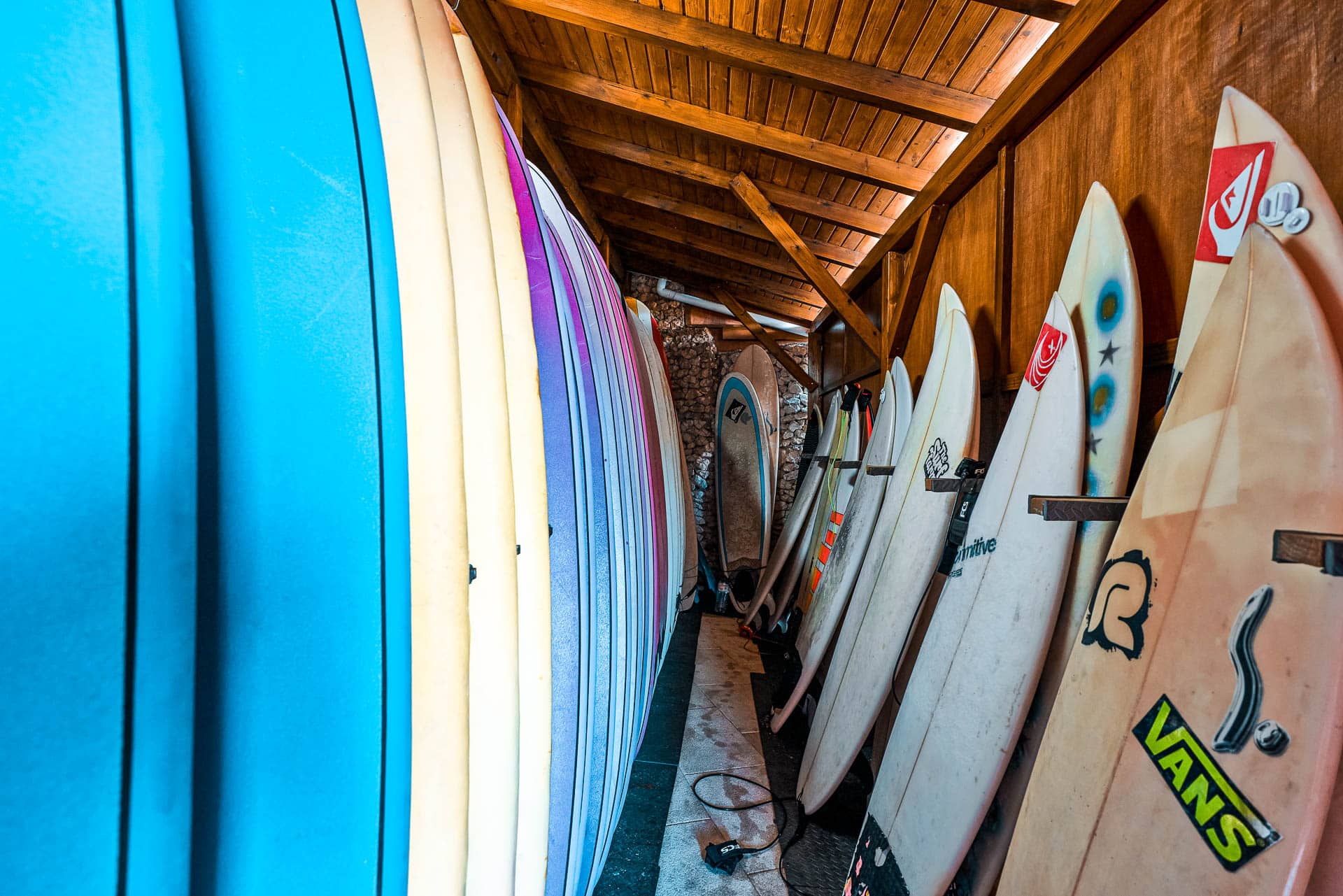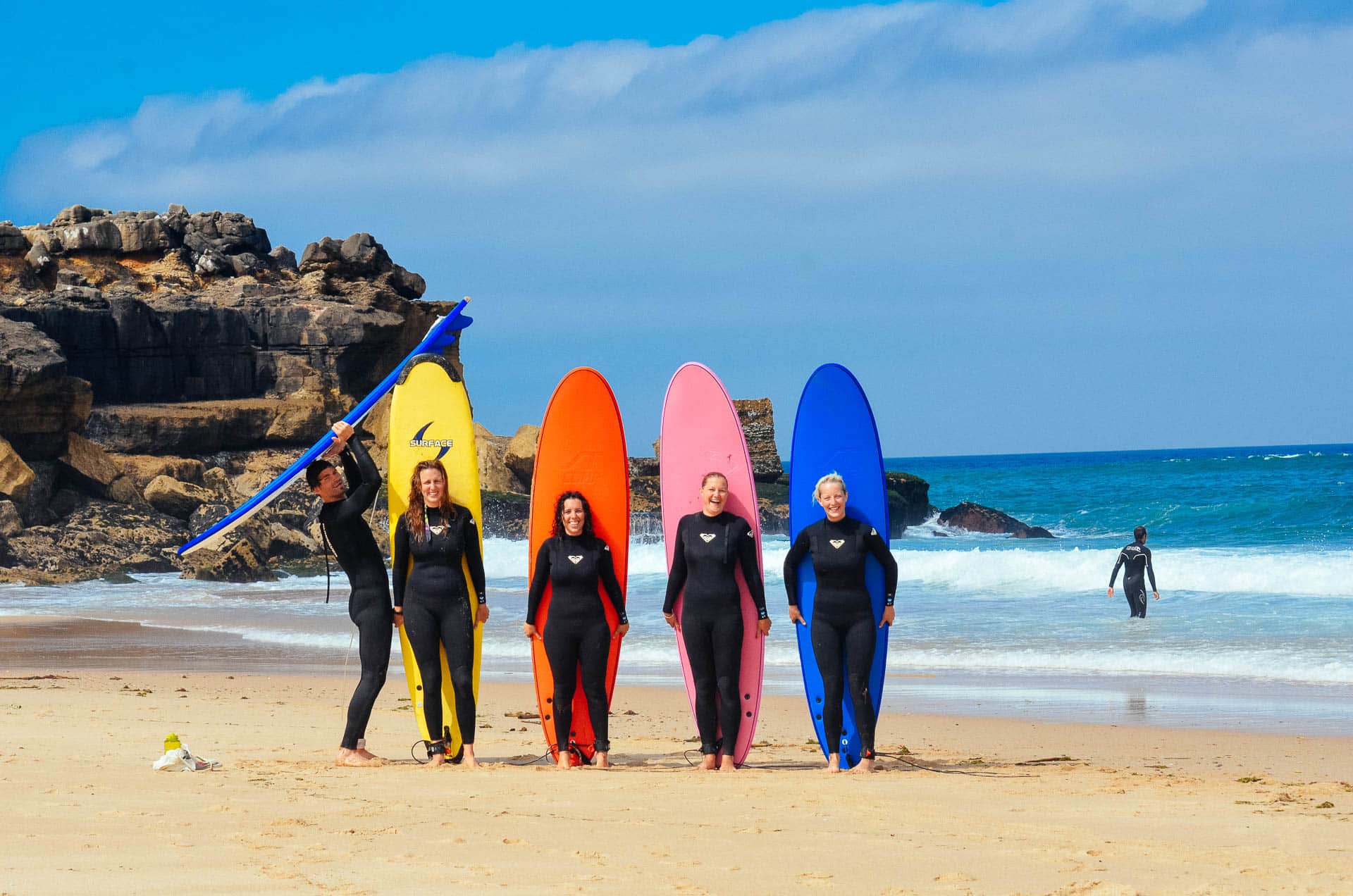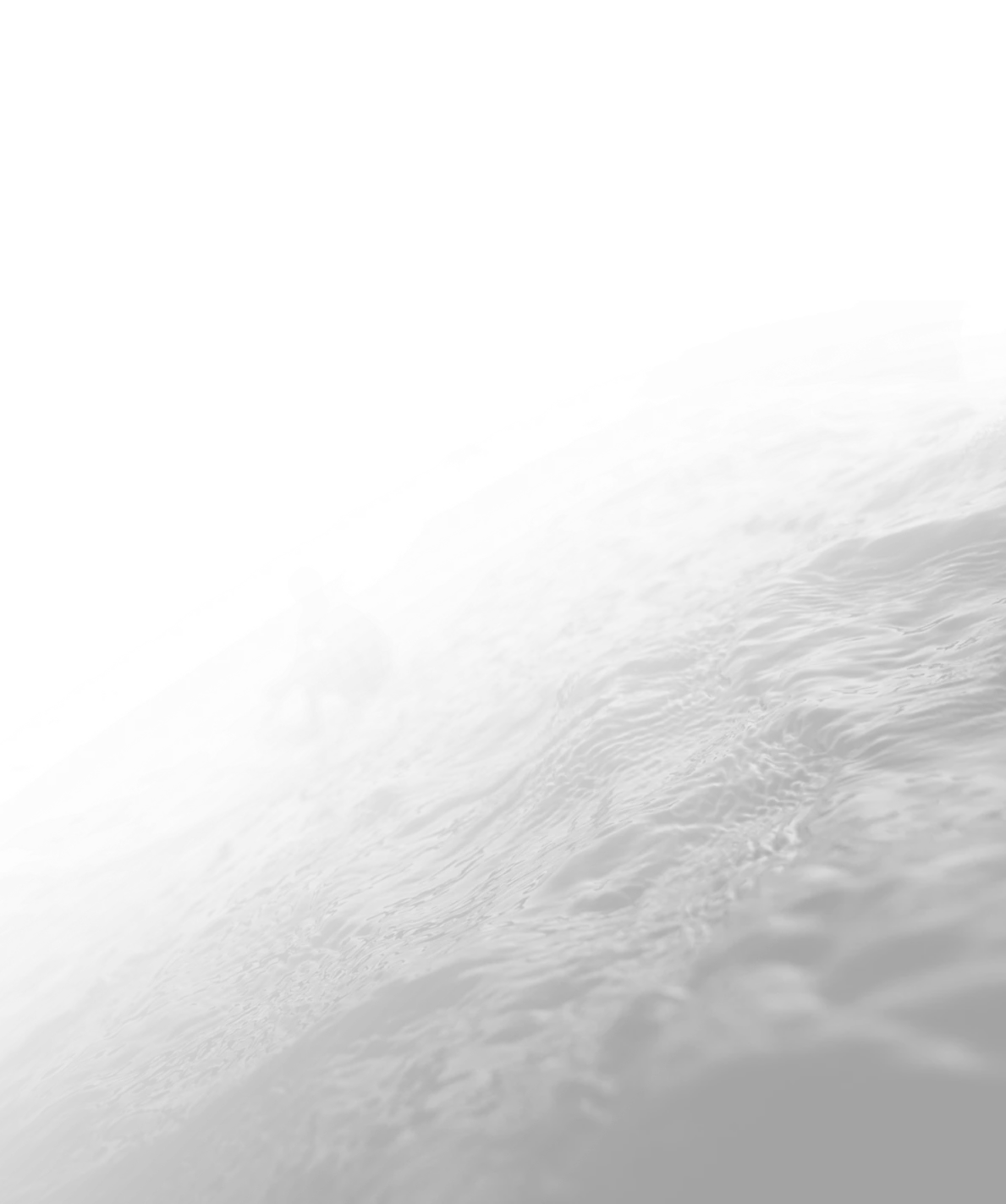If you’ve recently caught the surfing bug or are considering giving it a try, it’s important to understand what it means to be a “beginner” Whether you’re completely new to the sport or have only caught a few waves, being a beginner surfer is an exciting and challenging experience.
Surfing is a sport that requires finding the right size and shape of the surfboard that suits your skill level and body type. It is recommended to visit a reputable surf shop or surf school that offers the opportunity to test out different beginner surfboards before making a purchase. This article will help you understand what you need to look at when purchasing a surfboard as a beginner.
The Best Surfboards for Beginners – Surfboard Construction
For beginners, a soft top surfboard is the best construction choice due to its durability, buoyancy, and safety features. Unlike epoxy or polyester boards, soft top surfboards are designed to withstand the inevitable bumps and collisions that occur during the learning process. Their soft, foam construction also provides increased buoyancy, making it easier for beginners to paddle out and catch waves. Additionally, the soft material reduces the risk of injury to yourself and others in the water. The 5-10 feet length provides stability and ease of paddling, while the high volume makes it easier for beginners to catch waves and maintain balance.
The benefits of using a soft top surfboard are numerous. They offer excellent ease of control, making it easier for beginners to maneuver and balance on the board. The buoyancy of soft top boards also makes them ideal for catching small waves, providing beginners with ample opportunities to practice their surfing skills. Furthermore, soft top surfboards are versatile enough to accommodate learning basic surfing techniques, such as paddling, popping up, and riding waves.
For beginner surfers, foam surfboards are a great option due to their soft, forgiving construction. With their durability, buoyancy, and safety features, as well as their ease of control, small wave catching capabilities, and versatility for learning basic skills, soft top surfboards provide an ideal platform for new surfers to get started on their surfing journey.
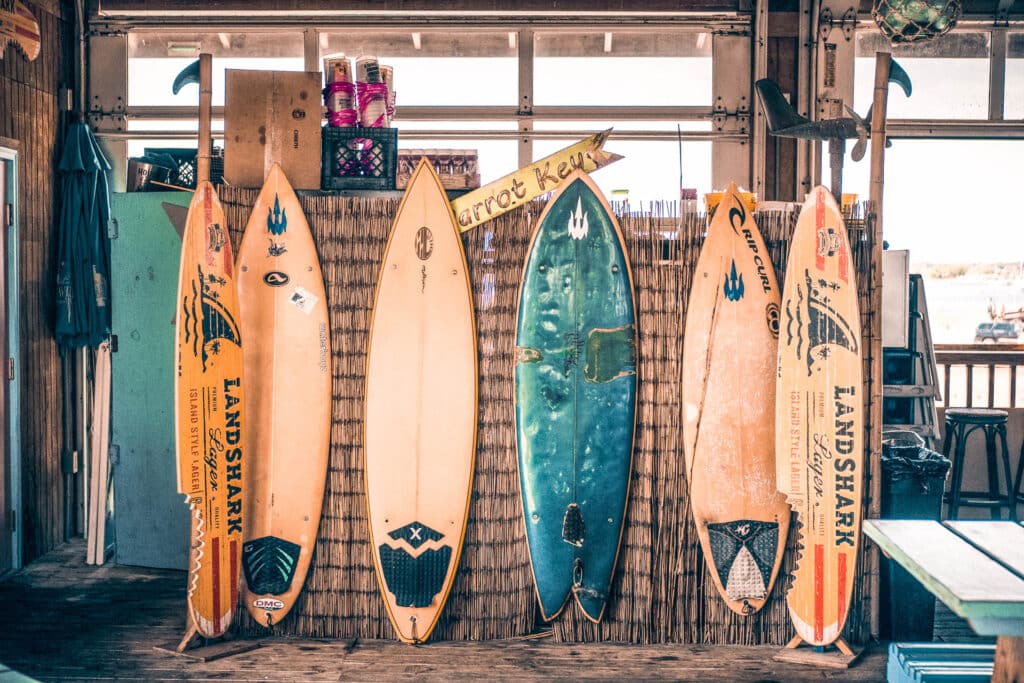
What type of surfboards should beginners avoid?
Hard-top/fiberglass surfboards are suitable for more advanced beginners, offering greater manoeuvrability and performance. These boards usually range from 6-8 feet in length and require more skill to paddle and balance on, but are great for progression as a beginner becomes more comfortable in the water.
The best beginner surfboards are those that offer a combination of length, stability, volume, and ease of paddling. Foam surfboards are ideal for absolute beginners, while soft-top epoxy and hard-top/fiberglass options offer progression for those looking to advance their skills in the water.
When it comes to choosing a surfboard for beginners, it’s important to consider certain key characteristics that can make a board unsuitable for those just starting out. Short surfboards, with their narrow shape and low volume, can be difficult for beginners to handle. These boards are harder to paddle and catch waves with, making the learning process more challenging.
The lack of stability and buoyancy in these types of surfboards can also make it harder for beginners to find their balance and stay on the board, ultimately hindering their progression in the sport. Examples of specific surfboards that fall into this category include high-performance shortboards and fish-style boards, which are designed for more experienced surfers who are looking for speed and manoeuvrability rather than stability and ease of use.
Overall, for beginners, it’s best to opt for a longer, wider, and higher-volume board that offers more stability and buoyancy, making it easier to learn the fundamentals of surfing.
Moving To Different Surfboards as You Progress as a Surfer
The ideal progression for advancing surfing skills from beginner to advanced involves transitioning from a longboard to a shortboard over time. As a beginner, it is important to choose the right surfboard for your skill level. As you progress, you can transition to a mid-length or fun board, which offer more manoeuvrability while still providing stability. Eventually, you can move on to a shortboard, which allows for more advanced manoeuvres and better performance in bigger waves.
When choosing a surfboard, consider your skill level, wave conditions, and the type of surfing you want to do. Longboards are great for learning and catching small waves, while shortboards are ideal for advanced manoeuvres and bigger waves. Fish-style boards are great for providing speed and control in smaller, mushier waves, while mid-lengths and funboards offer a balance between stability and manoeuvrability.
It’s important to take the time to practice and build your skills on each type of board before progressing to the next level. This gradual approach will help you become a well-rounded surfer with the ability to handle a variety of wave conditions.
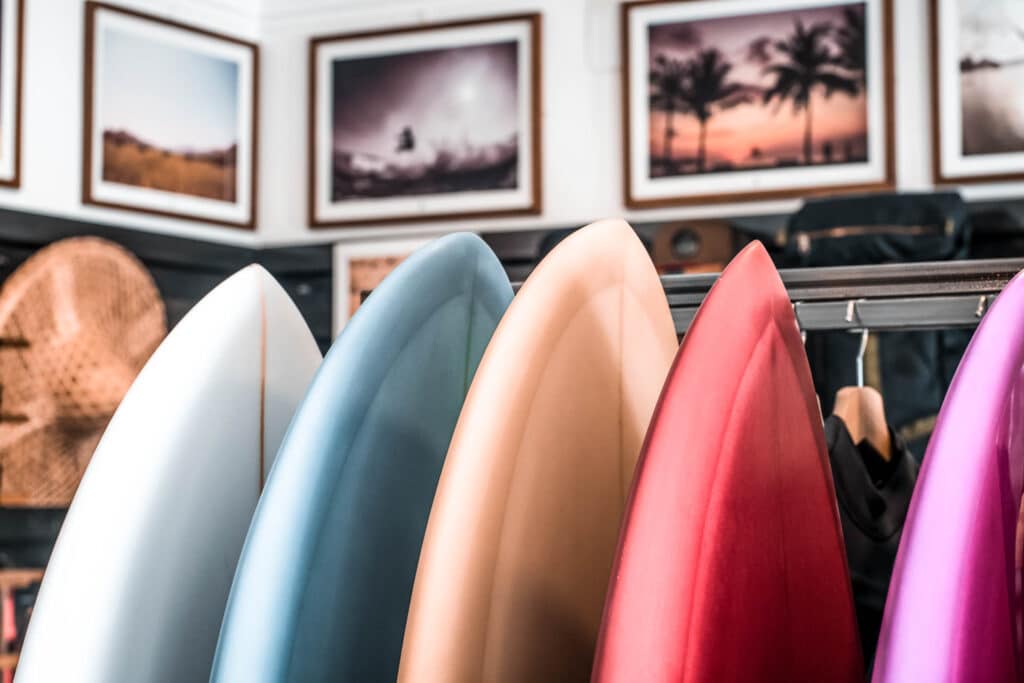
The Best Soft Top Surfboards for Beginners
The Odysea Log from Catch Surf is considered one of the best soft tops for beginner surfers due to its exceptional quality, durability, and performance. The board’s wide shape and buoyant foam construction make it incredibly stable and easy to paddle, perfect for those just starting out in the sport. The added volume and soft top construction also make it forgiving, allowing beginners to progress their surfing skills without worrying about wiping out on a hard fiberglass board. The Odysea Log’s solid build and reliable performance make it an ideal choice for those new to surfing.
Another top choice for beginner surfers is the Bomber by Soft Tech Surfboards. This soft top is known for its quality construction, durability, and overall performance. The Bomber’s unique shape and design make it easy to catch waves, while its soft top construction provides a comfortable and safe learning experience for new surfers. As beginners progress their surfing skills, they can rely on the Bomber’s stability and responsiveness to take their abilities to the next level.
In the foam category, the Wavestorm stands out with its durable construction, 8-foot length, and high volume making it easy to paddle and catch waves. For soft-top epoxy boards, the T Patterson Pill-2 Panda-The Repeater offers a stable and forgiving ride, with a rounded shape and ample volume, great for beginners learning to maneuver on the waves. In the hard-top/fiberglass category, the Noll Voyager is a top choice, with a classic longboard shape, moderate volume, and excellent stability for new surfers.
Additionally, the Isle Coronado Boardworks Froth! Soft-Top Surfboard features a wide, stable shape and buoyant foam construction, perfect for beginners looking to build their confidence in the water. The Degree33 The Ultimate Longboard offers a user-friendly design, with a 9-foot length and generous volume, ideal for beginners mastering the basics of surfing. And the Torq Longboard provides a smooth and stable ride, with a classic longboard shape and enough volume to make paddling and catching waves a breeze.
These top beginner surfboards excel in their respective categories, offering key features such as ease of paddling, stability, and forgiving performance, making them ideal choices for new surfers.
Are you ready to catch your first wave? Immerse yourself in the surfing adventure of a lifetime at Rapture Surfcamps!
Discover the perfect blend of sun, sea, and expert surf instruction at Rapture Surfcamps – the ultimate destination for beginners seeking to ride the waves with confidence. Our seasoned instructors at top class locations and world-class facilities guarantee an unforgettable surfing experience tailored just for you.
Why Choose Rapture Surfcamps?
- Expert Instructors: Learn from the best in the business, with experienced surf coaches dedicated to your progress.
- Ideal Beginner-Friendly Locations: Explore pristine beaches with gentle waves, perfect for honing your skills.
- Quality Equipment: Enjoy top-notch surfboards and gear, ensuring a safe and thrilling learning experience.
- Vibrant Surf Community: Immerse yourself in the surf culture, making friends and memories that last a lifetime.
Embark on your surfing journey with Rapture Surfcamps – where every wave brings you closer to mastering the art of surfing. Reserve your spot today by visiting www.rapturecamps.com.
Rapture Surfcamps Reviews
FAQs
For beginners, it’s recommended to start with a longer and wider board, typically at least 3 feet more than your height or in the 6-9 feet range. This provides better stability and makes it easier to catch and ride waves.
Soft-top surfboards are generally preferred for beginners. They offer more forgiveness and are more stable, providing an easier learning curve compared to the less buoyant and responsive hard-top boards.
For beginners, a thruster (three-fin setup) is a good choice. It offers a balanced combination of stability and manoeuvrability, helping beginners get accustomed to different wave conditions.
Beginners should focus on a surfboard with ample volume. Higher volume boards provide better floatation, making it easier for beginners to paddle into waves and maintain stability while learning to stand up.
Beginners can opt for used surfboards in good condition, as long as they meet the recommended size and shape criteria. However, it’s crucial to inspect the board for any damage and ensure it suits the beginner’s skill level.
A general rule of thumb is that the surfboard should be at least 3 feet taller than the surfer. Additionally, the width and thickness should provide enough buoyancy for stability without sacrificing manoeuvrability.
Beginners may need to reassess their surfboard as they gain experience. As their skills improve, they might transition to a smaller or more performance-oriented board that aligns with their evolving abilities and preferences.
